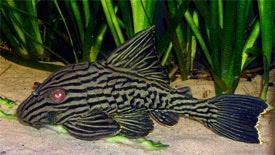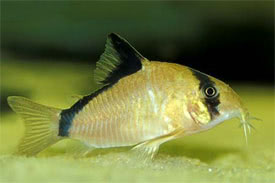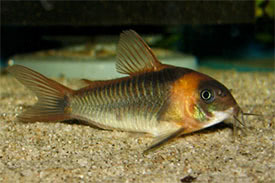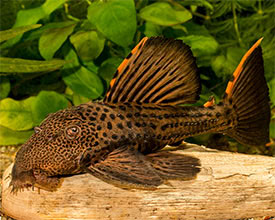
 Magyarul / Hungarian
Magyarul / Hungarian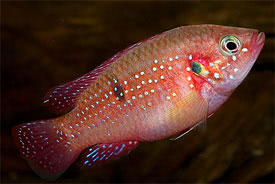

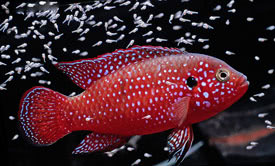

- Scientific name: Hemichromis lifalili
- Synonyms: -
- Common name: Blood-Red Jewel Cichlid
- Group: Cichlids
- Habitat: West Africa; from the Lower and Central Congo River basin
- Size: 11 cm
- Biotope: Inhabits in Congo, Ruki and Ubanghi River usually in the slow-flowing areas with high level of oxygen, but also found in Lake Tumba and Lake Yandja.
- Social behavior: Territorial, and aggressive fish especially during spawning. They should be kept in a species tank in pairs. Do not keep with small, peaceful fish, as they may be killed.
- Diet: Omnivorous; Not a fussy eater, it will accept flake foods, but live foods will enhance the coloration of the fish. Provide some vegetable matter in its diet, such as spirulina or spinach.
- Breeding: Quite easy
- Tank: Minimum 70 litres
- Population: 1 pair for 80 litres.
- Decoration: Needs a tank with dense vegetation and cave-like hiding places among rocks and roots. The fish tends to dig, so any plants will need to be very strongly rooted or potted.
- Temperature: 23-26 °C
- pH: 6-7.8
- Hardness: 4-15 NK°
- Lifespan: 5-10 years
Description: Hemichromis lifalili has a bright blood-red body coloration, that spotted with iridescent dots that range in color from yellow to turquoise. There is a black spot on the gill cover, and a dark spot also marks the mid-section of the fish. The fins are red and covered with many turquoise markings, while the dorsal and caudal fins are marked with a red and turquoise edge. These colors describe the fish during spawning. Generally the fish is lighter in red and has an olive back. Hemichromis lifalili is often confused with its cousin Hemichromis bimaculatus. These species can be easily distinguished as H. lifalili have only 2 black spots on the flanks whereas H. bimaculatus has 3, having an extra spot on the caudal peduncle, and the Jewel Cichlid is also a little larger. Other differences that H. lifalili has a little different base color hue, and its body spots are whiter, while there are only a few spots on its fins.
A group of 5-6 young fish should be purchased and a pair allowed to form from those. However, even this may take some time. It is difficult to pair up adult Blood-Red Jewel Cichlid. Once a pair is seen to form, the other fish should be removed as they may be killed. The pair will remain together for life.
The fish can be brought into spawning condition by feeding a good varied live food diet. They should be bred in a separated tank, or the other fish should be removed as they may be killed quite quickly, as Hemichromis lifalili become even more aggressive during this time. The pair will choose a spawning site on a flat rock, or the side of a flowerpot. The male is very vigorously pursuit the female and she may be harassed to death if she is not ready to spawn. The female can lay as much as 400 eggs. The eggs hatch in around 48 hours, and the parents move the fry into shallow pits, what the parents previously dig in the substrate around the spawning site. When the fry are free-swimming start feeding them with small live foods, such as microworm or brine shrimp nauplii. Brood care by the parents usually continues for about a month, after which the fry should be removed as the parents may spawn again.










































